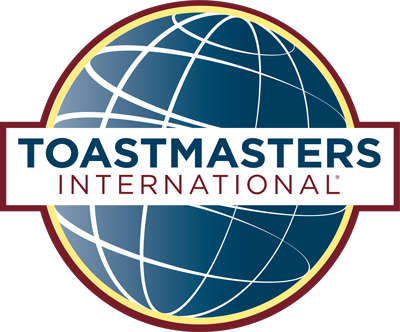During meeting
Introduce yourself and explain the role.
The main duty of the Toastmaster is to act as a friendly host and conduct the entire program, including introducing participants and the overall running of the meeting. Explain to the audience your role, and the meeting’s outline. Cover items including:
- Housekeeping – Phones are off & bathroom location
- Toastmaster’s mission
- Breakdown of the meeting (formal speeches, joke, evaluations, tea break, Table Topics, etc)
Introduce Timer and Grammarian/Um & uh counter
Explain that it takes help to run a smooth meeting, and invite the Timer and Grammarian to the stage to introduce their roles.
Prepared speeches
Introduce everyone to the prepared speeches section of the night.
At the start of each speech
- E.g. ‘Our first speaker is doing her second speech from the competent communicator manual’. You may wish to ask the speaker if they want any special kind of introduction.
- Ask the speech evaluator to give the objectives for the speech project.
- Introduce the speaker, remembering to give the title of the speech. Lead the applause until they reach the lectern, shake their hand and return to your seat.
At the end of each speech
- Shake the speaker’s hand and congratulate them.
- Ask if the audience has any questions for the speaker. Ensure this does not go over time.
- Once the questions are over, thank the speaker and introduce the next speaker.
- It’s good practice to have a question ready for the speaker to get the questions started.
Joker’s wild
- Introduce a fun part of the night, the joke. Ask the rostered person to provide a joke, then offer the reigning champion to compete, and then offer other members to provide a joke.
- Hold a vote to see who is the jokemaster.
Evaluations
Introduce the evaluation part of the evening. E.g. ‘Evaluation and positive feedback is an important part of Toastmasters. I’m now going to introduce …… who is evaluating ……’s speech. Please welcome…..’
Break
Explain that there will be a short tea break, confirming the time to come back, and asking the TT master to put their hand up and explaining that they will be coming around asking guests if they would like to partake in table topics. Explain where the tea and coffee is.
Table topics
Introduce this fun & informal part of the night, which is a great tool for learning impromptu speaking. Invite the Table Topics master up to explain the role and run the Table Topics section.
Introduce reports
Introduce the reporting section of the night, why we have reports, and then introduce the timer and grammarian for their reports.
Introduce the general evaluator, providing a concise explanation of their role.
After the reports
- Thank everybody for their reports.
- Thank the guests and tell them to talk to VP membership or a member if they have questions. Invite guests to come back.
- Make a few positive closing comments on the session.
- Return control of the meeting to the President.
Spicing up a meeting
Sometimes speakers pull out last minute which leaves a gap in the roster. As the Toastmaster it’s your responsibility to fill the gap with something to ensure the meeting runs smoothly.
It’s also nice to have some variety in our meetings from time to time.
Below are a few ways to spice up a meeting, or to fill in some free time.
- Hold a debate – Bring up two people, or two teams of people. Say a topic and make one team ‘for’ and one ‘against’. Give each speaker one minute time slots. If it’s just two people, give them 2 or 3 turns. If it’s team, just one turn per person. If you’re bringing up guests, ensure you’ve asked them beforehand.
- Memory Master – The Memory Master listens carefully to all speakers, noting down any points of interest, facts or other things that happened, along with the answer or correct version. Towards the end of the meeting, the Memory Master asks the audience to answer questions about what people said or did during the meeting. It can be a fun way to end a meeting and challenge the audience to remember points about the meeting. Download a memory master form here.
Allocate a memory master when you are initially emailing the club if possible.
- Reverse meeting – Everything is done backwards! The meeting begins with a general evaluation, followed by reports, table topics, break, speech evaluations, followed by speeches. This requires a lot of club participation and communication!
- Google it! There are a lot of great ideas online.
